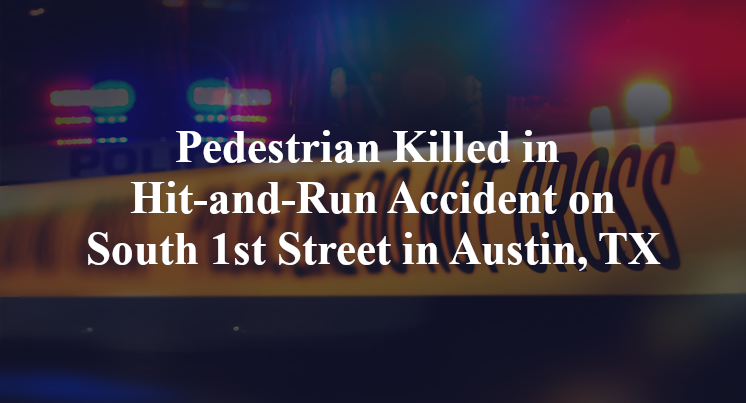Pedestrian Killed in Hit-and-Run Accident on South 1st Street in Austin, TX
Austin, TX — October 4, 2025, a pedestrian was killed in a hit-and-run accident at about 10:15 p.m. near the intersection of South 1st Street and Orland Boulevard.
Authorities said a collision involving a vehicle and a pedestrian was reported at the intersection.

The pedestrian, a man whose name has not been made public yet, was pronounced dead at the scene of the crash, according to authorities.
The vehicle involved in the crash was not present when police arrived, authorities said.
Authorities have not released any additional information about the Travis County crash at this time. The accident is still under investigation.
Commentary
After any deadly pedestrian accident, what lingers most is the sense that more should have been done to prevent it. That feeling only deepens when the driver responsible doesn’t stay behind to account for what happened. Every unanswered question becomes a thread that demands pulling, and it's worth asking whether enough is being done to follow those threads to the end.
Did the authorities thoroughly investigate the crash? Hit-and-run cases make thorough investigations even more critical, yet they often start with serious disadvantages. Without a suspect at the scene, officers must lean heavily on witness accounts, surveillance footage and debris patterns to piece together what happened. But that takes time and skill. It's worth asking if investigators walked the area for nearby cameras, canvassed for independent witnesses or ran laser mapping to document the scene in full. In many jurisdictions, the quality of crash investigations can vary widely. Some officers are trained extensively in collision reconstruction, while others might lack the tools or time to dig deeper than the surface.
Has anyone looked into the possibility that a vehicle defect caused the crash? With the driver gone, the vehicle itself becomes both missing evidence and a potential source of answers. There's always the possibility, however remote, that a defect played a role. Malfunctions like sudden acceleration, steering loss or brake failure might not leave visible traces, but they can be critical in understanding how a crash unfolded. Until the vehicle is found and examined by qualified experts, this angle remains unresolved.
Has all the electronic data relating to the crash been collected? In today’s world, a pedestrian accident at a busy intersection late at night might have been captured by traffic cameras, nearby businesses or even passing vehicles equipped with dash cams. Digital clues, like phone records from the victim or electronic logs from rideshare apps, could shed light on the moments leading up to the crash. Investigators should also be pulling any available footage that might show the suspect vehicle’s escape path or provide a clearer image for identification. These tools can bridge the gap when traditional evidence is lacking, but they require persistence to obtain and analyze.
What happened in those final moments may still be unclear, but what is clear is how much still needs asking. When a life is lost and accountability remains out of reach, every investigative step matters. Leaving possibilities unexplored doesn’t just delay justice. It erodes trust in the process meant to deliver it.
Key Takeaways:
- Not all crash scenes get the time or technical analysis they need, especially in hit-and-run cases.
- Mechanical failure should be considered when the vehicle is still missing and facts are scarce.
- Gathering footage and data from the area may be the only way to track down what happened.

*We appreciate your feedback and welcome anyone to comment on our blog entries, however all visitor blog comments must be approved by the site moderator prior to showing live on the site. By submitting a blog comment you acknowledge that your post may appear live on the site for any visitors to see, pending moderator approval. The operators of this site are not responsible for the accuracy or content of the comments made by site visitors. By submitting a comment, blog post, or email to this site you acknowledge that you may receive a response with regard to your questions or concerns. If you contact Grossman Law Offices using this online form, your message will not create an attorney-client relationship and will not necessarily be treated as privileged or confidential! You should not send sensitive or confidential information via the Internet. Since the Internet is not necessarily a secure environment, it is not possible to ensure that your message sent via the Internet might be kept secure and confidential. When you fill out a contact or comment form, send us an email directly, initiate a chat session or call us, you acknowledge we may use your contact information to communicate with you in the future for marketing purposes, but such marketing will always be done in an ethical way.